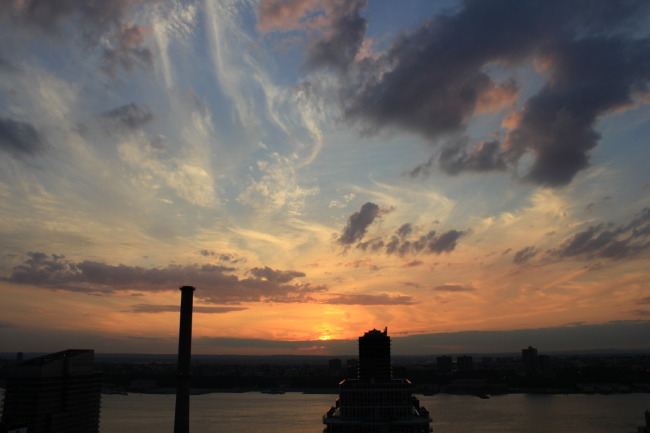New York Pre-Concrete Jungle
 Elliot Turner Posted on
Elliot Turner Posted on  Wednesday, April 11, 2012 at 1:34PM
Wednesday, April 11, 2012 at 1:34PM As I've mentioned several times already, I am thoroughly addicted to TED Talks. I just watched a particularly cool one by Eric Sanderson, where he goes back and reconstructs a visual model of what the island of Manhattan looked like when Henry Hudson first sailed into New York Harbor and the river that bares his name, including an analysis into the topography, geography and robust ecosystems of the island.
Often I find myself in awe of the natural element to New York, these days even far more so than the gigantic buildings that make up the city's renowned skyline. Yes the big buildings are impressive, but to me, they have become so natural that there is a deep internal apathy to its effect. As time evolves, I have started to marvel more at the actual topography of the lands around me, from the Harbor down by the Battery, to the cliffs opposite Washington Heights, to that large still seemingly natural swath of land we call Central Park in the middle. The Hudson River itself is so large and powerful that it has crafted one of the most unique systems of tidal pools, straights, estuaries and meadows in the world.
I can't help but wonder when on a boat with the following view, what would this look like sans concrete, steel and people?

Or when on a rooftop looking West over New Jersey, what the river, transitioning to meadows, growing into forests and ultimately mountains would look like compared to what is there today:
It's always fascinated me how the geography of Manhattan specifically allowed for the city that is today New York. Eric Sanderson gives an amazing glimpse into the original nature behind the island itself, beyond just the geographical location, which enabled New York to become the city that it is today:
 Manhattan,
Manhattan,  eric sanderson,
eric sanderson,  hudson river,
hudson river,  new york,
new york,  ted talk | in
ted talk | in  The Outdoors
The Outdoors 
Reader Comments